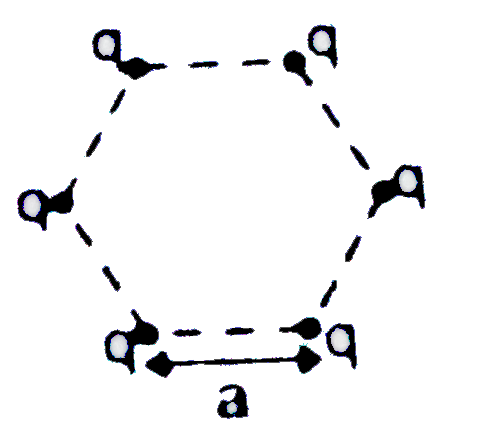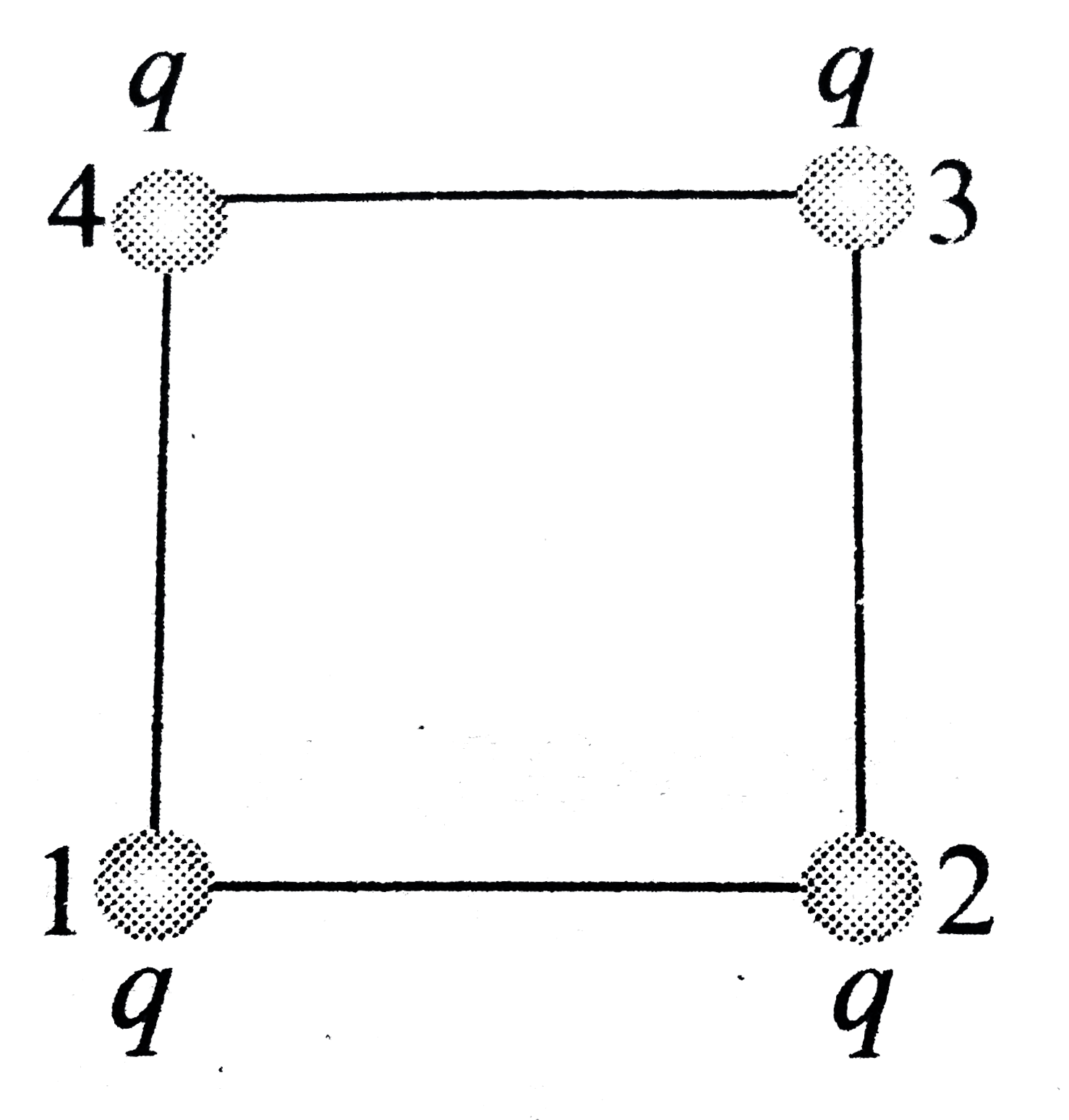In a regular polygon of n sides, each corner is at a distance r from the center . Identical charges are placed at ( n-1) corners . At the center, the intensity is E and the potential is V. The ratio V/E has magnitude .
nr
(n−1)r
(n−1)/r
r(n−1)/n
The correct Answer is:B
V=(n−1)KQr,E=KQr2⇒VE=(n−1)r
Topper's Solved these Questions
- BOOK - ALLENCHAPTER - MISCELLANEOUSEXERCISE - Exersice-037videos
MISCELLANEOUS
- BOOK - ALLENCHAPTER - MISCELLANEOUSEXERCISE - ASSERTION-REASON18videos
MISCELLANEOUS
- BOOK - ALLENCHAPTER - MISCELLANEOUSEXERCISE - Part -II Example Some worked out Examples1videos
MISCELLANEOUS
- BOOK - ALLENCHAPTER - KINEMATICS (MOTION ALONG A STRAIGHT LINE AND MOTION IN A PLANE)EXERCISE - BEGINNER S BOX-78videos
KINEMATICS (MOTION ALONG A STRAIGHT LINE AND MOTION IN A PLANE)
- BOOK - ALLENCHAPTER - PHYSICAL WORLD, UNITS AND DIMENSIONS & ERRORS IN MEASUREMENT EXERCISE - EXERCISE-IV8videos
PHYSICAL WORLD, UNITS AND DIMENSIONS & ERRORS IN MEASUREMENT
Similar Questions
Knowledge Check
- Question 1 - Select One
In a regular polgyon of n sides, each cormer is at a distance r from the center . Identical chargs are placed at ( n-1) corners . At the center, the intensity is E and the potential is VM. The ratio V/E has magnitude .
ArnBr(n−1)C(n−1)/rDr(n−1)/n - Question 2 - Select One
In a regular polygon of n sides, each corner is at a distance r from the centre. Identical charges are placed at (n−1) corners. At the centre, the intensity is E and the potential is V. The ratio V/E has magnitude
ArnBr(n−1)C(n−1)/rDr(n−1)/n - Question 3 - Select One
In a regular polygon of n sides, each corner is at a distance r from the centre. Identical charges of magnitude Q are placed at (n−1) corners. The field at the centre is
AkQr2B(n−1)kQr2Cnn−1kQr2Dn−1nkQr2
The magnitude of electric intensity at a distance x from a charge q is E.An identical charge is placed at a distance 2x from it Then the magnitude of the force it experience is ..
View SolutionFour identical charges q are placed at the corners of a square of side a. Find the potential energy of one of the charges due to the remaining charges.
 .View Solution
.View SolutionTwo identical positive charges are placed at the diagonally opposite corners of a square and two more identical but negative charges are placed at the remaining two corners. What is the work done in putting all charges together at the centre if q is the magnitude of each charge and 2a is the length of each side of the square?
View SolutionSix equal point charges q each are placed at six corners of a hexago of side a. Find out potential energy of charge system
 View Solution
View SolutionIn a regular polygon of n sides, each corner is at a distance r from the centre. Identical charges each of magnitude q are placed at corners. The field at the centre is
View Solution


 .
.